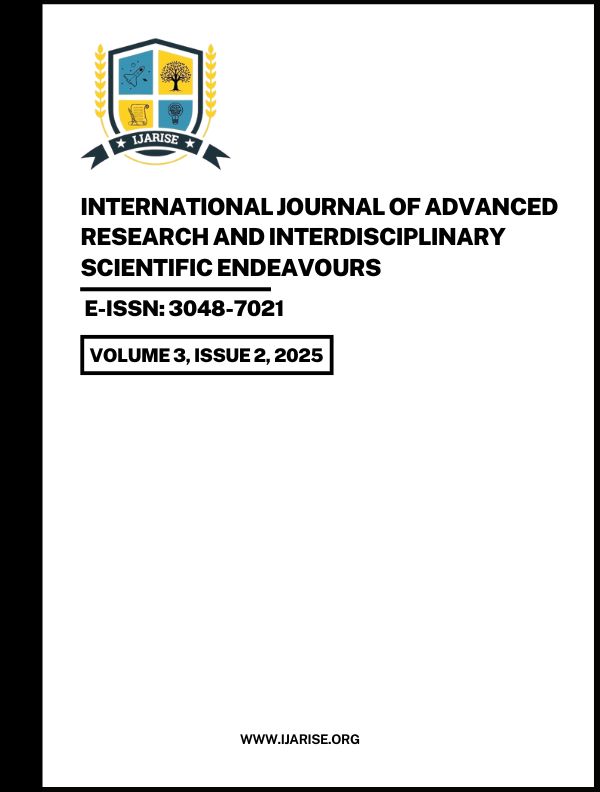Comprehensive Observation of the 21 June 2020 Annular Solar Eclipse in Northern India: Phase Evolution, Atmospheric Response, and the Ring of Fire Phenomenon
Published 2025-08-30
Keywords
- Solar Eclipse,
- Astronomy,
- Astrophysics,
- Ring of Fire,
- Ground-based Observation
How to Cite
Copyright (c) 2025 International Journal of Advanced Research and Interdisciplinary Scientific Endeavours

This work is licensed under a Creative Commons Attribution 4.0 International License.
Abstract
On 21,june,2020, annular solar eclipse was witnessed from Nakodar City, situated in the northern part of India. The rare celestial phenomenon created the clear "Ring of Fire" effect when the Moon passed well in front of the Sun but, because it had a smaller angular size, did not block the Sun completely. With a Celestron AstroMaster 130EQ telescope and a certified solar filter, we effectively recorded the full sequence of eclipse stages, from the beginning contact, to maximum annularity, to the end contact, under secure and stable observational conditions. This study offers a critical observational analysis based on ground-level photographic records of the eclipse without automated image analysis tools. Instead, phase tracking was manually done using a controlled time-sequenced observation protocol, while ensuring the proper detection of all important stages, including annular ring formation. Additional atmospheric conditions like visible light obscuration and temperature variation were recorded during the eclipse interval to determine its immediate terrestrial impacts. The article explains the geometrical and physical concepts that occur during the eclipse, such as the conditions required for annularity, magnitude of the eclipse, and obscuration ratio. The article also notes the capability of amateur-level astronomical machinery to produce high-quality observational data adequate for scientific reporting. This research seeks to add to the general field of solar astronomy by offering an organized instance of eclipse recording from a rural setting in India, confirming the relevance of local ground observations to global eclipse science.


